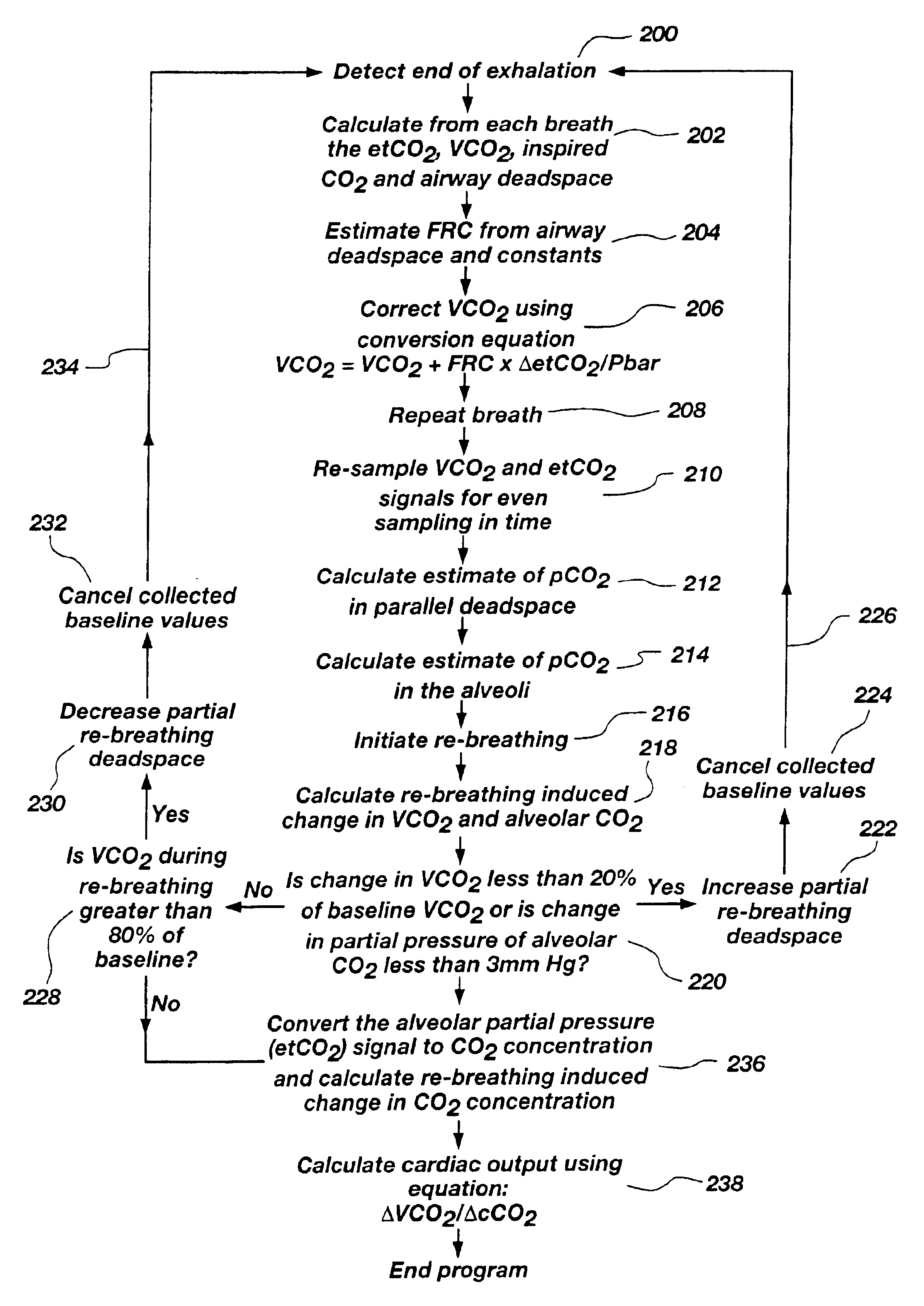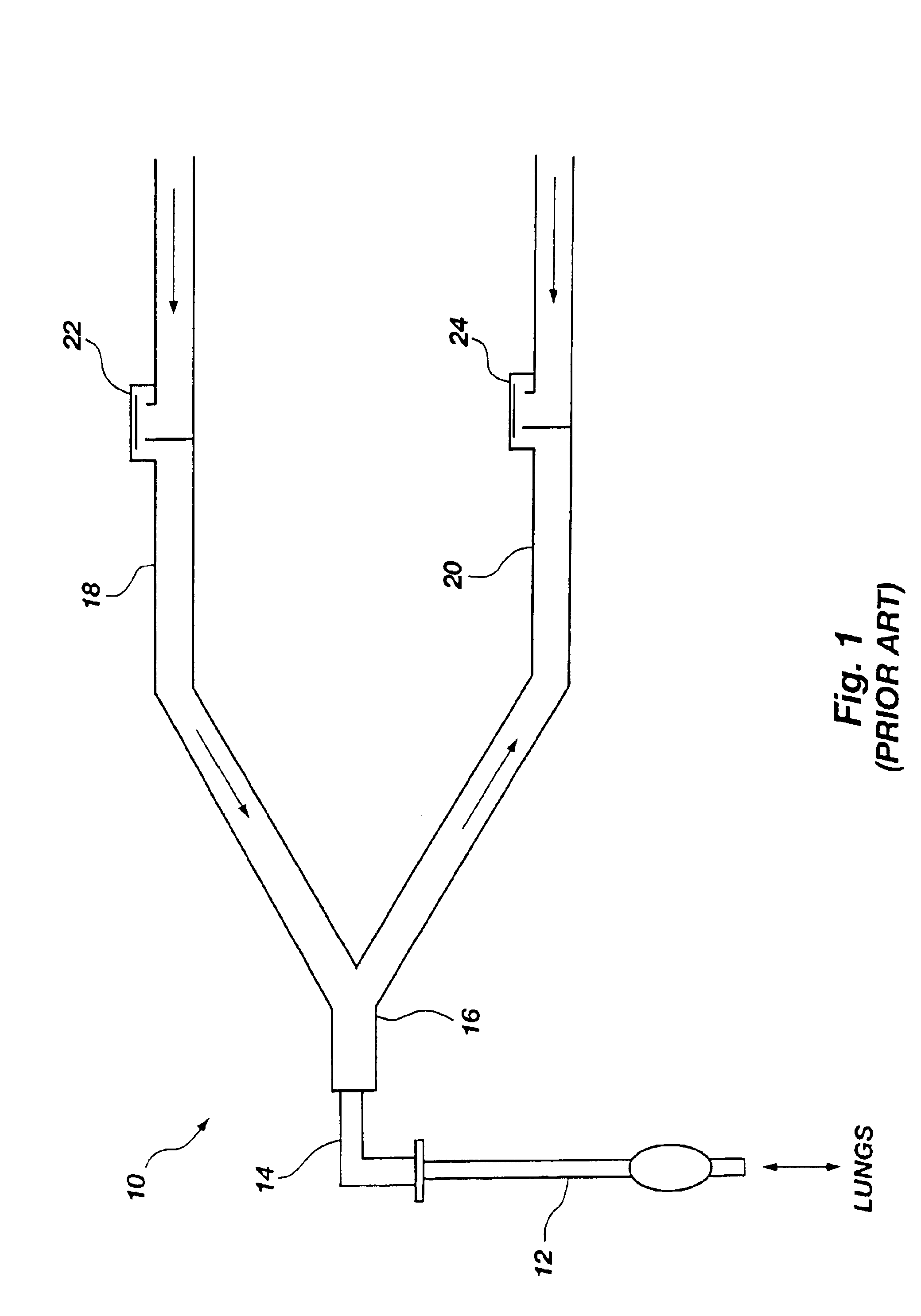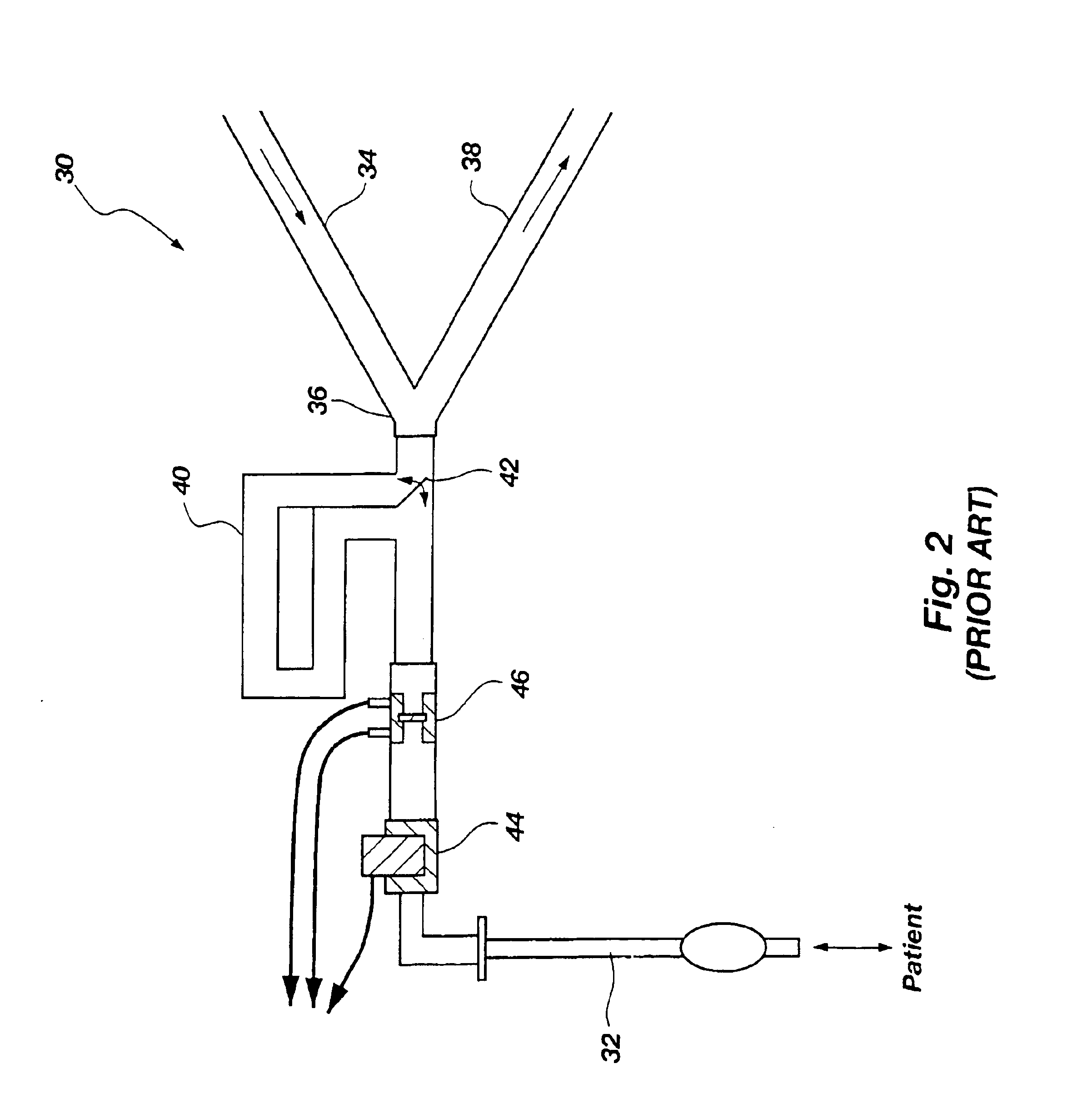Apparatus and method for non-invasively measuring cardiac output
a non-invasive, cardiac output technology, applied in the field of non-invasive means of determining cardiac output in patients, can solve the problems of high morbidity and mortality consequences, inability of sedated or unconscious patients to actively participate in inhaling and exhaling into a bag, and inability to accurately measure cardiac output. , to achieve the effect of modest recovery time and reasonable monitoring system cos
- Summary
- Abstract
- Description
- Claims
- Application Information
AI Technical Summary
Benefits of technology
Problems solved by technology
Method used
Image
Examples
Embodiment Construction
[0033]For comparative purposes, FIG. 1 schematically illustrates a conventional ventilation system which is typically used with patients who require assisted breathing during an illness, a surgical procedure or recovery from a surgical procedure. The conventional ventilator system 10 includes a tubular portion 12 which is inserted into the trachea by intubation procedures. The distal end 14 of the tubular portion 12 is fitted with a Y-piece 16 which interconnects an inspiratory hose 18 and an expiratory hose 20. Both the inspiratory hose 18 and expiratory hose 20 are connected to a ventilator machine (not shown) which delivers air to the inspiratory hose 18. A one-way valve 22 is positioned on the inspiratory hose 18 to prevent exhaled gas from entering the inspiratory hose 18 beyond the valve 22. A similar one-way valve 24 on the expiratory hose 20 limits movement of inspiratory gas into the expiratory hose 20. Exhaled air flows passively into the expiratory hose 20.
[0034]In known ...
PUM
 Login to View More
Login to View More Abstract
Description
Claims
Application Information
 Login to View More
Login to View More - R&D
- Intellectual Property
- Life Sciences
- Materials
- Tech Scout
- Unparalleled Data Quality
- Higher Quality Content
- 60% Fewer Hallucinations
Browse by: Latest US Patents, China's latest patents, Technical Efficacy Thesaurus, Application Domain, Technology Topic, Popular Technical Reports.
© 2025 PatSnap. All rights reserved.Legal|Privacy policy|Modern Slavery Act Transparency Statement|Sitemap|About US| Contact US: help@patsnap.com



